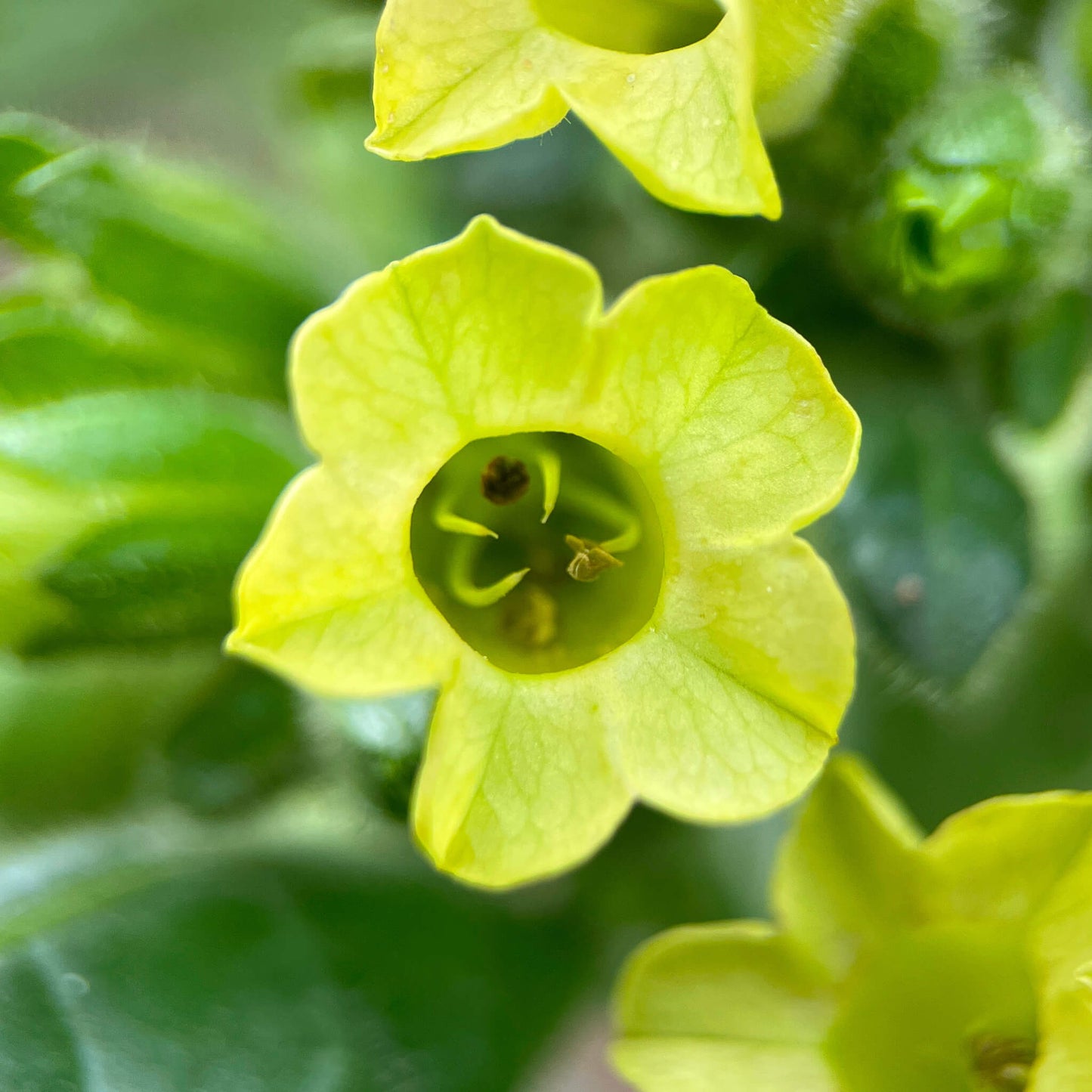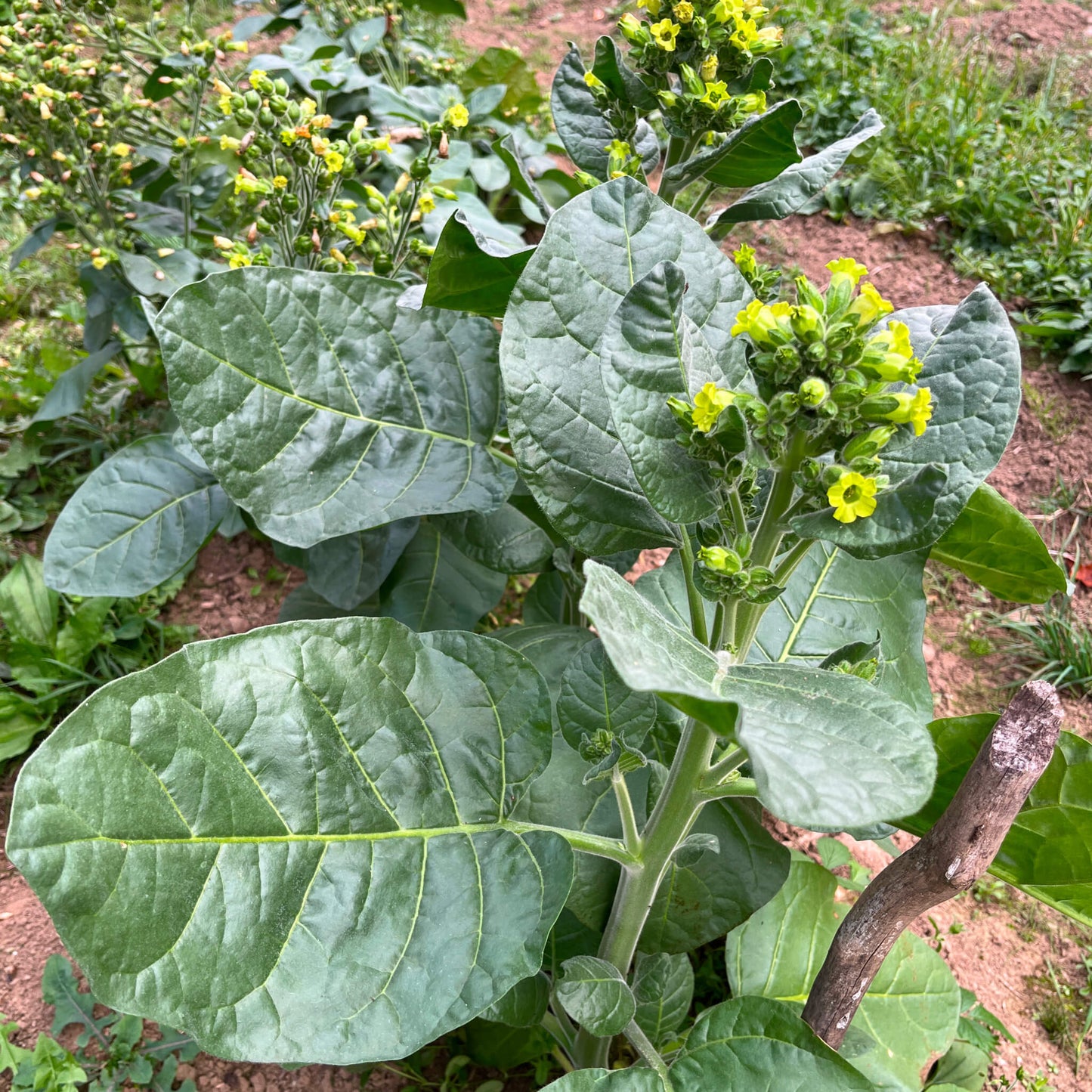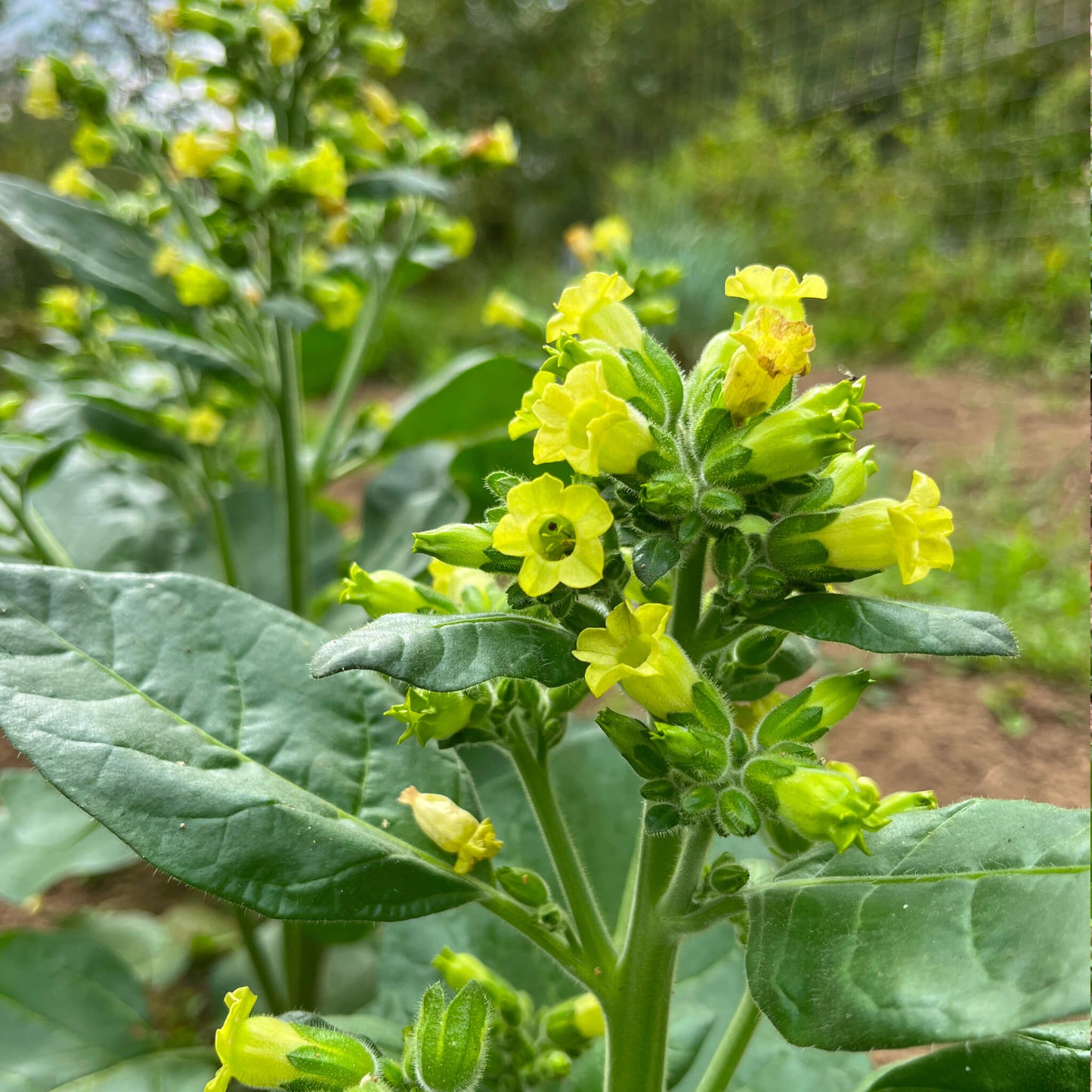This site is protected by hCaptcha and the hCaptcha Privacy Policy and Terms of Service apply.
For successful seedlings,
see the growing notes at the bottom of the page!
Aztec tobacco (Nicotiana rustica), also known as wild tobacco, is an annual herbaceous plant that produces large, oval leaves and clusters of tubular yellowish flowers rich in nectar, attracting numerous pollinators. Native to Central America, Aztec tobacco has been cultivated since pre-Columbian times and was later introduced to Canada through Indigenous trade routes.
The plant holds deep significance for many Indigenous cultures; creation stories often portray tobacco as the first plant given by the creator to Indigenous peoples, intended to foster connections between humanity and the spiritual world. In many Indigenous traditions, tobacco is regarded as a sacred plant and is used for both medicinal and spiritual purposes. It is frequently employed in ceremonies to communicate with the spirit world, as an offering to spirits and ancestors, or as a gift before gathering medicinal plants or other natural resources.
Although effective as a repellent for deterring unwanted insects from crops, it is not recommended to prepare it as an insecticidal infusion, as nicotine-based insecticides are highly toxic.
Medicinal and Culinary Uses
Aztec tobacco has recognized medicinal properties but must be used with caution due to its high nicotine content. The plant is known to be stimulating, expectorant, and analgesic. Traditionally, it has been used for its stimulating effects and to relieve certain headaches and muscle pain, though medicinal use should be limited and strictly controlled due to toxicity. Internal use of Aztec tobacco is highly discouraged without professional supervision because of the harmful effects of nicotine.
Ecological Roles
Aztec tobacco attracts various pollinators with its nectar-rich flowers and contributes to local biodiversity by providing a food source for insects. In gardens, it is sometimes used as a trap plant to divert pests from neighboring crops. However, it is essential to handle this plant carefully, especially when using it for insecticidal infusions, as the nicotine it contains is toxic.
Akène cannot assume any responsibility for the use of plants for therapeutic purposes. Always seek advice from a professional before using a medicinal or edible plant.
Sowing and Growing
Technical Details
Seeds per packet: 250
Family: Solanaceae
Scientific name: Nicotiana rustica
Life cycle: Annual
Hardiness zone: 3b
Soil type: Loamy
Soil moisture level: Medium
Soil - additional attributes: Well-drained
Light: Sun
Blooming: August to September
Spacing: 45 cm
Height: 100 cm
Deer resistance: High
Stratification: No
Scarification: No
Germination time: 7 to 21 days
Sowing depth: Surface



